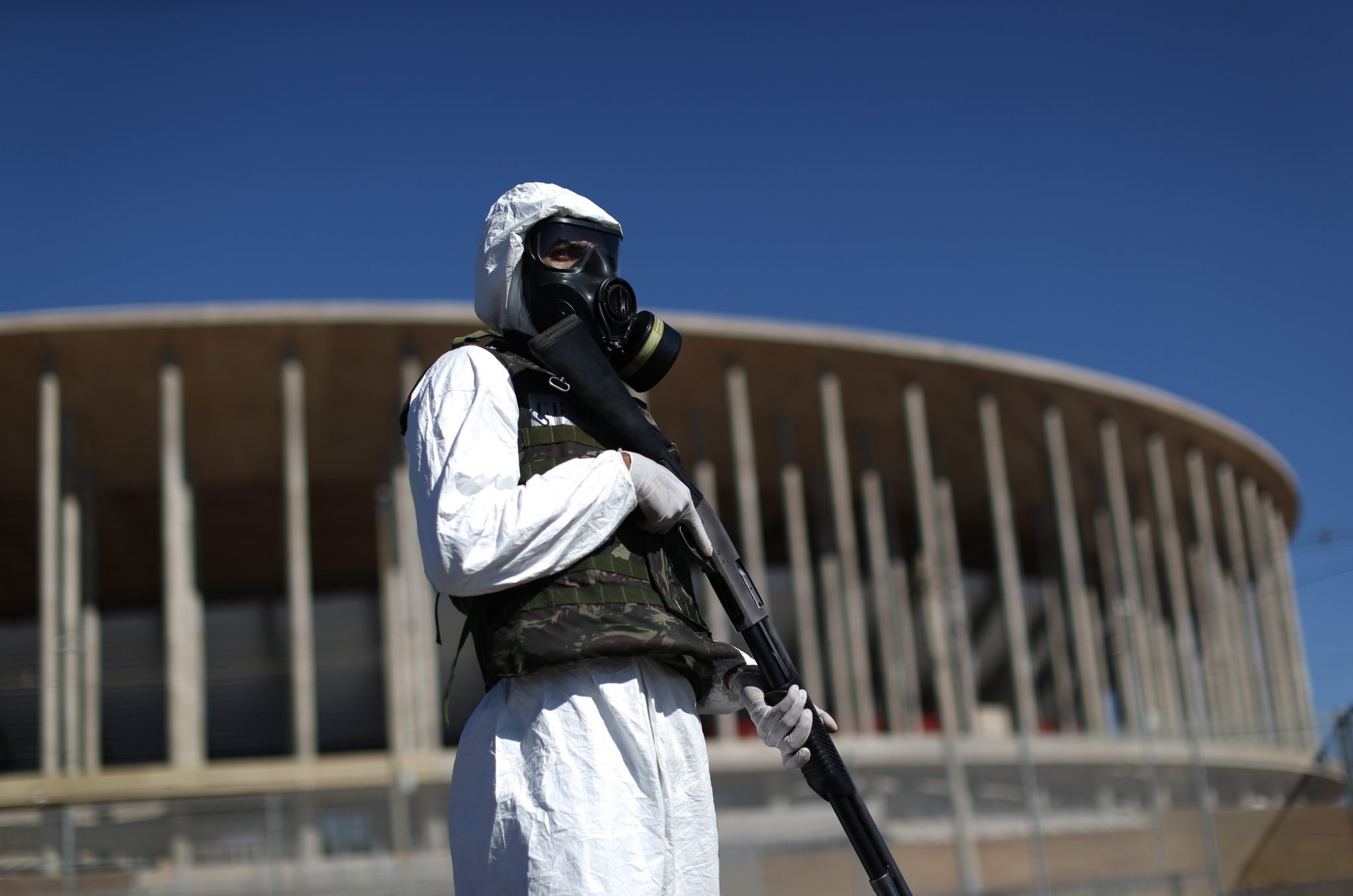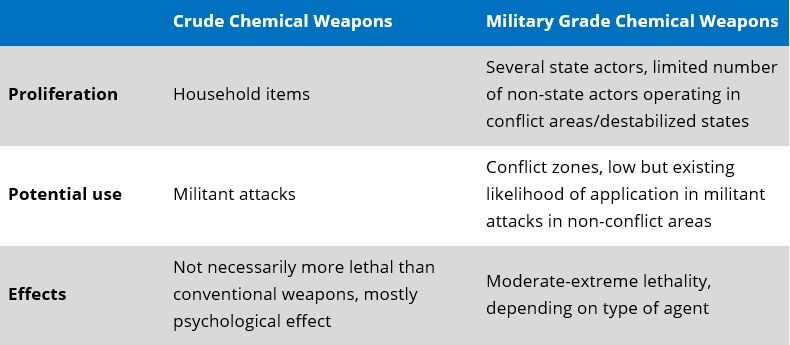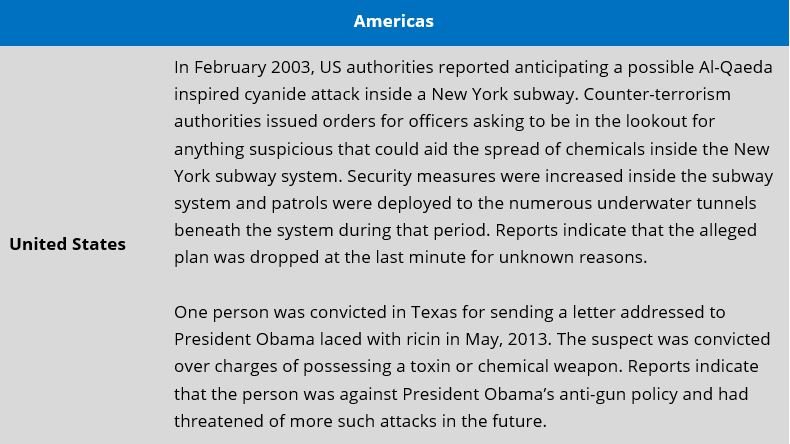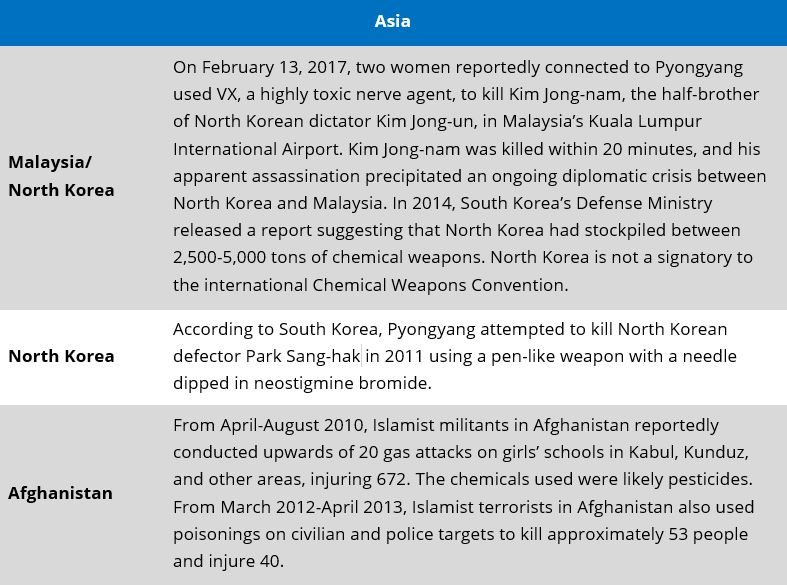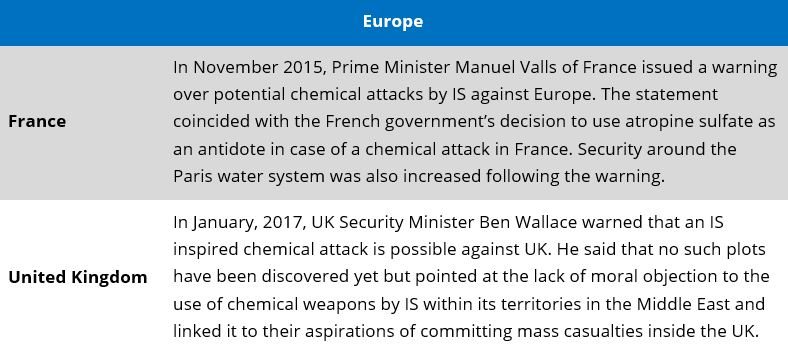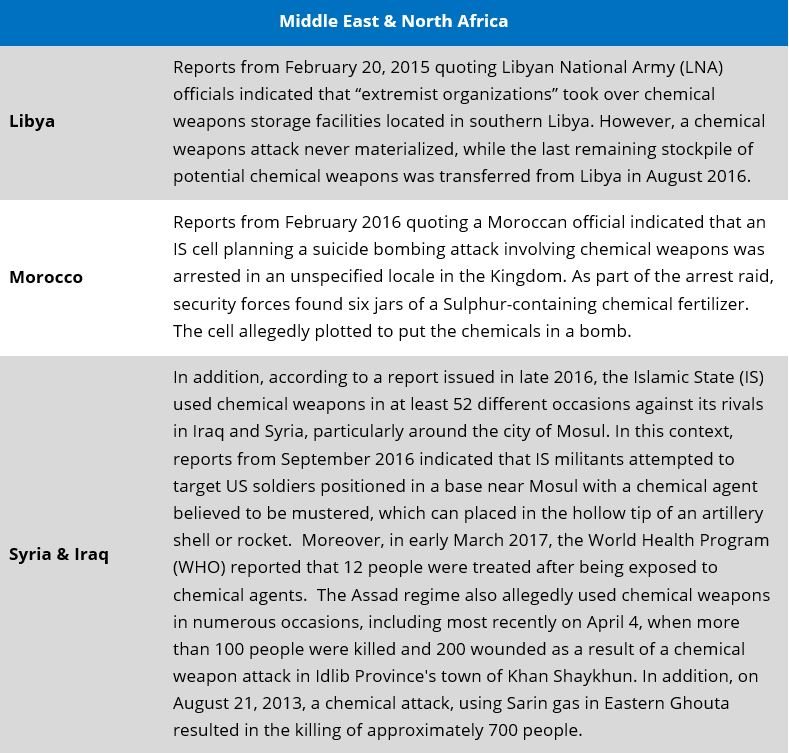Executive Summary
In light of the recent events in Syria, where on April 4 the Assad regime is alleged to have used sarin gas to attack a rebel-controlled town in the Idlib Province, killing nearly 100 people and wounding hundreds more, it is necessary to review the possibility of chemical attacks by militant groups or individuals in non-conflict zones.
While being considered a “red line” in the past, use of chemical weapons in recent years did not result in significant ramifications, prompting more widespread use.
Growing media coverage amidst lack of response likely fueled this process, despite negative public opinion.
Militant groups likely to expand use of crude chemical weapons in near future, mostly for psychological effects, while attempting to deploy military grade weapons in non-conflict regions.
With this in mind, as a security manager, it is necessary to review protocols for dealing with such incidents to ensure that your offices and employees are as prepared as possible.
Historical Use and Normalization of Chemical Weapons
Following the conclusion of the World War II, the use of chemical warfare, along with biological warfare, was perceived as a “red line” by most of the countries worldwide, and second in severity only to the deployment of nuclear weapons. However, despite this perception, such weapons were at periods used without significant ramifications to the parties responsible, with the most notable example being the deployment of chemical weapons by the Iraqi government during the war with Iran, and most prominently the 1988 Halbaja attack, which reportedly saw the use of blister, nerve and possibly blood agents.
This fact led to a waning of the perception of possible consequences as a result of initiating a chemical attack, prompting various actors who maintained, or obtained large stockpiles of weapon-grade chemical weapons to being less constrained in their use. Furthermore, western militaries made legal use of chemical weapons in conventional warfare, mainly of white phosphorus to conceal movement, which at times nonetheless had lethal effects in the area of deployment.
As the media continually developed over time, these incidents received more coverage than in the past, however despite of the overall negative public attention such incidents typically did not result in significant negative implications. Instead, the increased media attention, along with general lack of accountability likely prompted a growing number of actors to employ chemical warfare due to the high lethality rates, cost effectiveness and psychological effects. These developments led to an almost normalization and acceptance of the use of such unconventional weapons, which is best exemplified by indications that the Islamic State (IS) conducted at least 52 different chemical attacks in Iraq and Syria, as per a report issued in late 2016. The Syrian government also has used chemical weapons on numerous occasions, most recently on April 4 in a rebel-controlled area of the Idlib Province, with nearly 100 people killed and 200 wounded.
Potential Applications by Militant Groups, Individuals
Additionally, IS in particular is known to have capabilities for self-manufacturing of chemical weapons, leading to two additional threats. First, the possibility that rockets with chemical warheads will be fired at areas adjacent to IS-controlled territory in Iraq and Syria and other conflict zones, given proliferations of those means. Furthermore, and posing a higher risk, is the possibility that one of the experts employed in IS’s chemical warfare program will return to his home state, where he will implement his knowledge and expertise to conduct a domestic large scale chemical attack.
As the use of chemical warfare remains rare, all countries facing this risk are either under-skilled or not prepared at all in the prevention, mitigation and treatment. While given the increase in the threat of application of chemical weapons resources may be invested into improving capabilities, this process may be prolonged and not fully effective even when completed, thus contributing the larger potential effects.
Implications for Security Managers
Chemical attacks can bring about a large amount of casualties, although the chances and likelihood for an attack of such scale remain low. That being said, you still must be able to instruct your employees on the best ways to react in various scenarios. In this context, there are a number of measures that both individuals and firms can take to prepare for a possible chemical attack, and to equip employees with the best possible information and behavioral recommendations.
To best prepare your employees and office, it is advised to:
- Create a procedure and plan for employee behavior in case of a chemical attack, and instruct employees on such procedures.
- Mention the possibility of such a scenario during your periodic employees’ awareness training in order to mentally prepare them.
- Ensure supply of sufficient first aid tools in the office, including first aid kits with surgical masks and atropine syringes.
If a chemical attack takes place in your vicinity, it is recommended to do several things, and employees should be instructed in such protocol:
- Identify the location of the attack and remove yourself from that area as quickly as possible, avoiding the contaminated area if feasible and moving upwind of the site. If it is not possible to avoid the impacted area, shelter in place, moving to a higher floor.
- Cover your nose and mouth, using a surgical mask or handkerchief if a gas mask is not available. Additionally attempt to cover exposed skin on the arms and legs. If you do become exposed to an agent, once in a safe area, remove any impacted clothing and wash yourself thoroughly with soap.
- If you are outside, it is advised find clean air, either by removing yourself from the area or going inside a nearby building.
- If you are in a building in the vicinity of an attack, it is advised to close all windows and doors and shut all ventilation, including central heating or air conditioning systems, while seeking shelter in an internal room and sealing the room with plastic and duct tape.
- Remain cognizant of authorities’ warnings and instructions.
MAX Security provides awareness training and crisis contingency planning.
